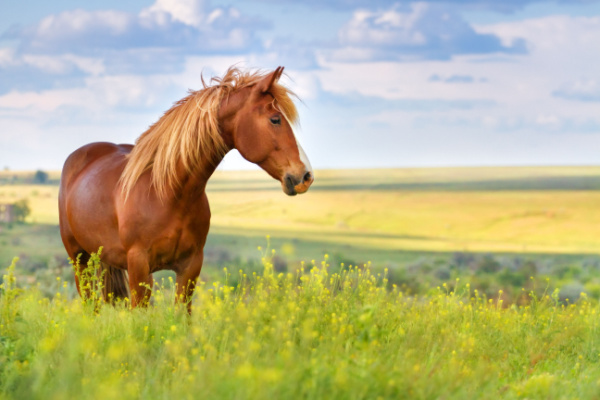The Bureau of Land Management (BLM) created the Wild Horse and Burro Program to implement the Wild-Free Roaming Horses and Burros Act, passed by Congress in 1971. Broadly, the law declares wild horses and burros to be “living symbols of the historic and pioneer spirit of the West” and stipulates that the BLM and the U.S. Forest Service have the responsibility to manage and protect herds in their respective jurisdictions within areas where wild horses and burros were found roaming in 1971.
The Wild-Free Roaming Horses and Burros Act
During the 1950s, Velma B. Johnston, later known as “Wild Horse Annie,” became aware of the ruthless and indiscriminate manner in which wild horses were being treated on western rangelands. So-called “mustangers” played a major role in harvesting wild horses for commercial purposes during this time.
Wild Horse Annie led a grassroots campaign, famously involving many school children. Newspapers published articles about the exploitation of wild horses and burros. As noted by the Associated Press on July 15, 1959: “Seldom has an issue touched such a responsive chord.”
In January 1959, Nevada Rep. Walter Baring introduced a bill prohibiting the use of motorized vehicles to hunt wild horses and burros on public lands. The “Wild Horse Annie Act” became Public Law 86-234 on Sept. 8, 1959, but it did not include Annie’s recommendation that Congress initiate a program to protect, manage and control wild horses and burros.
By 1971, the population of wild horses on public lands had declined significantly because of the encroachment of man and the impact of mustangers. In response to public outcry, Congress unanimously passed the “Wild Free-Roaming Horses and Burros Act” (Public Law 92-195) to provide for the necessary management, protection and control of wild horses and burros on public lands. President Richard M. Nixon signed the bill into law on December 18, 1971.
What makes a Horse or Burro Classified as “Wild?”
Wild horses and burros are defined by federal law as unbranded, unclaimed, free-roaming horses or burros found on public lands in the United States. Today, the Bureau of Land Management protects and manages wild horses and burros in balance with other public resource values on 177 herd management areas across 26.9 million acres of public lands. Most wild horses and burros living today are descendants of animals that were released or escaped from Spanish explorers, ranchers, miners, the U.S. Cavalry and Native Americans.
Wild horses and burros are diverse in their coloring, ranging from solid brown and black to colorful pintos and palominos. Most wild horses stand 13 to 15 hands high (52-60 inches) and weigh from 700 to 1,000 pounds. Wild burros average 11 hands high (44 inches) and weigh about 500 pounds.
What is Wild Horse and Burro “Management?”
To maintain wild horses and burros in good condition and protect the health of public lands, the BLM says it must manage the population growth of wild horse and burro herds. Without natural population controls, such as predation, herds can increase at a rate of up to 20 percent annually, doubling in size in just 4 to 5 years, if not appropriately managed. Population control must be implemented to protect scarce and fragile resources in the arid West and ensure healthy animals.
To carry out this mission, the BLM controls herd growth through the application of fertility measures, such as birth control, and through the periodic removals of excess animals and the placement of those animals into private care.
For example, in Fiscal Year 2023:
Nationwide population estimate: 82,883 wild horses and burros, as of March 1, 2023
Total removed: 5,335
Total placed into private care (adoptions, sales, transfers): 8,045
Total fertility control treatments: 720
Total expenditures: $157.828 million
Download the full 2023 population estimate data set
Interested in Adopting a Wild Horse or Burro?
The BLM offers wild horses and burros that were removed from the range for adoption into private care. Since 1971, the BLM has adopted out more than 270,000 wild horses and burros nationwide. Potential adopters can attend an off-site adoption event, visit a BLM adoption center, or participate in an Online Corral Adoption event.
To find out more about the program, and get answers to some commonly asked questions, visit BLM’s Wild Horse and Burro site.
—
Photo Credit: Callipso88 / Shutterstock.com
